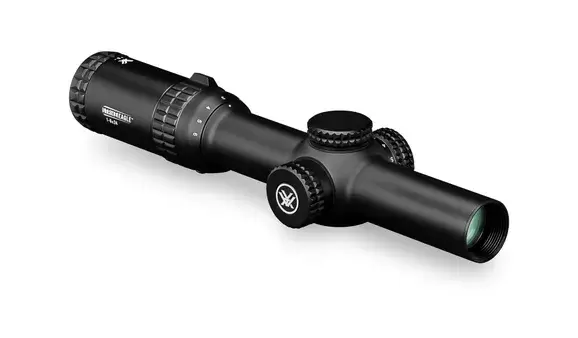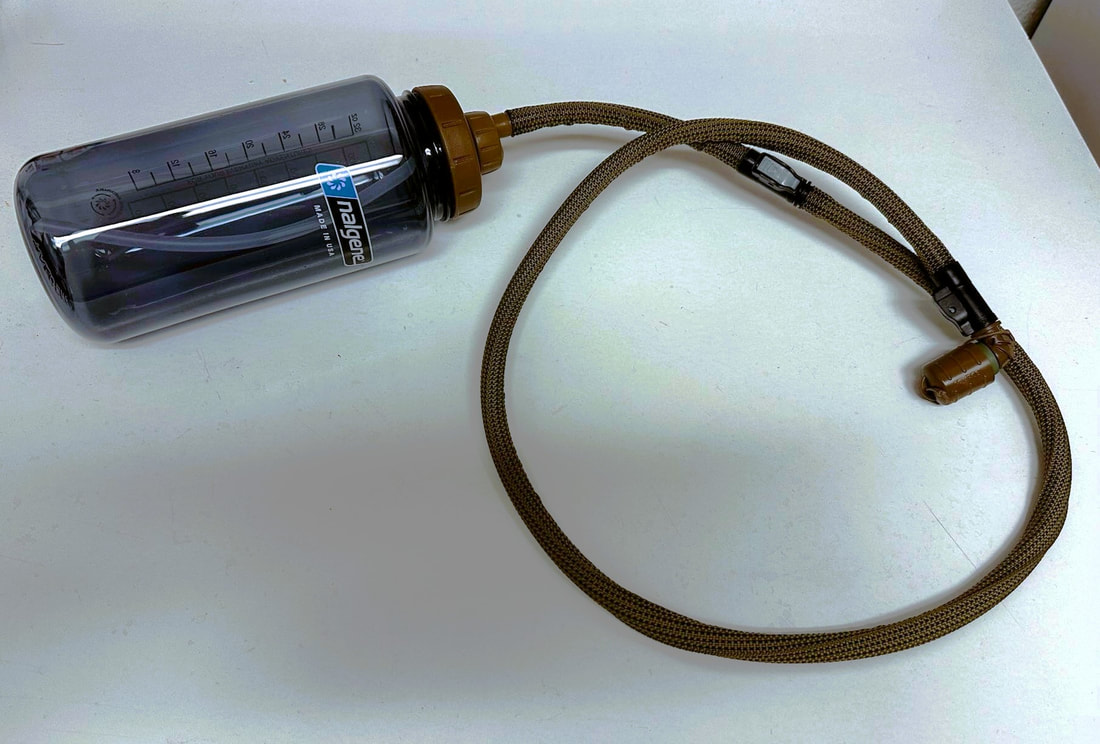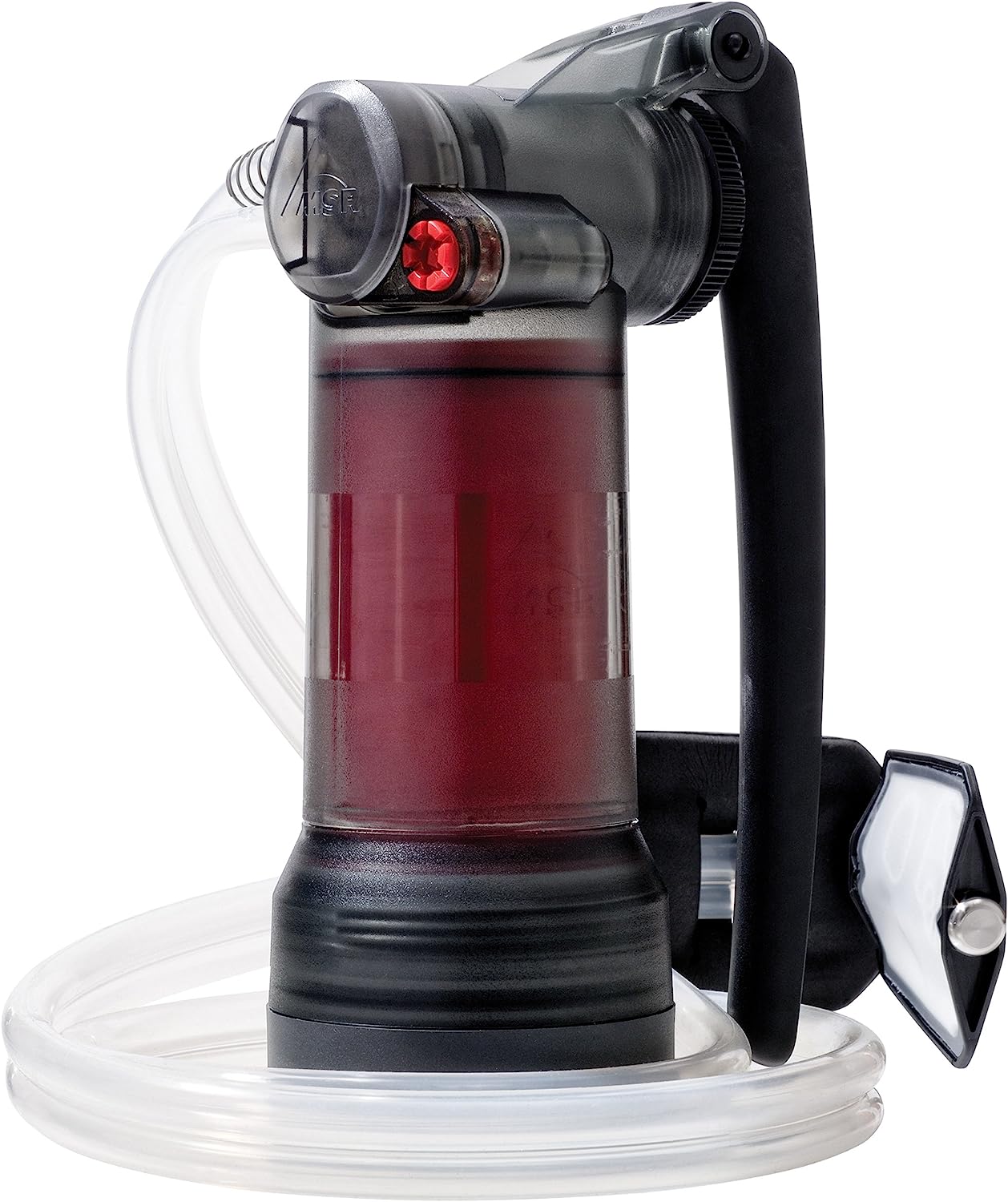|
An LVPO is a Low Power Variable Optic. These are rifle scopes that have a variable magnification range of 1x up to 10x. They are intended for medium range shooting (200-500 yards or an AR-15’s effective range) while allowing 1x shooting for close range targets. Adjustments are a rapid turn of a dial, often equipped with a large, easy to move, throw lever. For those who may be shooting at close ranges one moment and long range the next, they can give a lot of advantage over other solutions.
LVPO pros:
Fixed magnification scopes like ACOGs are popular, often at 4x, but the magnification is always present. Zooming in close all the time isn’t always better. Only having a single setting high magnification scope on your AR is kinda like driving using binoculars. Lots of people don’t like 4x only on their ACOGs. Magnification at close range distorts the field of view (zooms in too much) making it non-ideal for indoor targets or those at say <50 yards. Red dots are often x1 and are used for 25-200 yard range targets. These can be used in combination with night vision or a flipping magnifier mounted on the weapon in-line with the sight. A red dot and a magnifier will generally weigh less than an LVPO but these magnifiers are often only one fixed magnification level and protrude from the weapon to the side slightly when not in use. For up close shooting, there is no way to make fixed scops go to 1x. One solution was to mount a small red dot in addition to the ACOG or whatever. Some versions have this second sight above the scope, raising the height over bore (which would make a negligible difference for near-range shots) or offsetting them say at 45° necessitating that the rifle be canted to use the red dot. An LVPO is just one item on your rifle. The ability to see targets better at a further distance appeals to me. You can better identify a hostile target or verify if that deer is mature enough to be taken without switching to binoculars. It’s easier to hit a target like a head a few hundred yards out with a magnified sight picture than hoping for a minute-of-man center of mass shot at range. LVPO cons:
Many users report that they only used the 1x or maximum magnification, negating the "variable" aspect of the scopes. For them, it was either up close and no magnification or dial it in to the highest setting. Intermediate settings didn't help, although many of the anecdotes don't tell us what the maximum setting was. At 4x, skipping the settings in between is understandable but maybe you'd want the improved field of view at 6x versus zooming all the way in to 8x when you don't need go that far. Why can't you just have the 1x, 4x, and 8x? Why do I have to go through 2-7x? Because of the way the magnification works, you are moving parts inside the scope and there is intermediate magnification in between the most common settings. It's like complaining that you have to shift through 2nd-5th gears to put the transmission into 6th. It’s worth noting that on more budget friendly scopes, the reticle matters. On single focal plane scopes, the reticule distance markers are only accurate at a given magnification, often the maximum magnification. For reticles that stay the same regardless of the magnification, get a second focal plane scope. Zero magnification and normal eyesight using iron sights or red dots make viable accuracy out to 200-300 yards (depending on skill). An AR-15's maximum effective range against a static target is about 400-600 yards for a good shooter. Do you need to shoot that far? For most people, probably not. Most infantry engagements occur at less than 200 yards and urban fighting under 100 yards. A LVPO will make those medium range shots easier though. When I actually shot my Vortex Strike Eagle 1-6×24, the first thing I noticed was the weight. It was a little heavy on my 16” AR-15 but nothing that I couldn’t deal with. More upper body strength alleviates this concern and so does throwing it on a rest of some kind. With a bipod it would be negligible. The weight was not awkward though. Accuracy was fine, better than me. Controlling the magnification will take practice. At first, I had it at 1x and was surprised only the reticle seemed special. Even with the throw lever, it will take some getting used to in order to efficiently dial in the right magnification for the distance. Not that the actual process is hard, rather I mean getting my brain to naturally remember what zoom is best for what distance and teach myself that muscle memory. Once that’s ingrained I expect it to be a breeze. I was shooting at 200 yards in desert terrain in the early morning twilight. Ordinarily, I would have trouble picking up my steel target at that distance with a 1x scope due to lighting and the terrain color making the yellow spray paint I’ve been. At 3x, I had no problem finding and identifying my dun colored target covered with lead splatter that blended in with the dirt and shadows. I haven’t practice hitting targets after traversing but I think keeping a sight picture while swinging the rifle around won’t be any more difficult than with a red dot. For this Vortex in particular, it fit over my rear back-up iron sight, but I’d have to remove the scope if it failed some how to shoot off my backup irons. Scope shadow and parallax was a problem because of the eye relief issues as above but they were manageable as long as I adjusted the stock and kept my head planted firmly. Again that’s probably muscle memory. For a budget LVPO, I would recommend the Vortex Strike Eagle (either x6 or x8). It’s a good entry point and you can find out if you like the concept or not. Mine was $299 with a cantilever base from PSA using discount code “STRIKE” (may vary when you see this article). Thanks to UncleZo for posting the link on Twitter; @UncleZoGunTales and http://www.unclezo.com. Jack Lawson’s Civil Defense Manual
I had a chance to peruse Mr. Lawson’s book this weekend at a friend’s house. This is a comprehensive and universal disaster survival manual. This reminds me of the big go-to cookbooks that everybody used to have that tells you how to cook anything. No exhaustive details on a particular cuisine, but enough for you to pull off a big dinner with great results. The CDM covers pretty much every emergency scenario you could imagine happening in reality. This is the book that you keep around for when the low probability emergency (that you didn’t prepare for) which suddenly becomes high probability. I would highly recommend it as a gift to less apocalyptically inclined family members. Yes, on Christmas morning they’ll probably flip through it with some mild curiosity and then shelve it, but when SHTF they are going to go straight to it. Now we can’t help people who won’t read this stuff beforehand and prepare proactively, but the way Lawson wrote is book could help people who are ready to listen. He serves everything up to the willing ear with a persuasive argument. I call this “why you should care.” The chapters are written in a friendly and relatable manner. Historical and personal anecdotes are includes which personalize the danger, the need for concern, and that preparation can be achievable. You can see this from the excepts published on American Partisan. Lawson doesn’t overwhelm people, which may scare them, nor does he bash people over the head with an info dump. The tone is positive, i.e. making someone want to survive instead of becoming frightened, apathetic, and hopeless. So keep a copy around for when “I didn’t think that could happen here” happens and give a copy to your clueless friends and relatives. Joe Dolio’s Tactical Wisdom series (TW-#) These series of books are essentially field manuals for the civilian who expects a need to operate in a tactical or combat manner. In other words, how to move and fight like a soldier or Marine. The way this information is presented is easily relatable and clear. It literally is like an instruction manual. Editions cover both urban and rural combat. What I enjoyed most is the manuals were not oriented towards prior combat arms and seem to have come from a line infantry vs. special forces perspective. Even a green civilian with little tactical sense could be well educated in the principles of not dying and making the other guy die. If you want to know how to patrol in a military fashion after SHTF, these are the manuals. Third, there is no fluff. Actual field manuals are often less instruction books than they are definitions of policy and doctrine. If you want a “how to” book, this series is it. If you enjoyed the Ranger manual because it covers everything and gets to the point, you’ll enjoy Dolio’s series. I particularly liked his interactions with Antifa while undercover. In future editions of my own urban combat non-fiction works, I will be including a reference to these books for those who need tactical instruction. Fernando "Ferfal" Aguirre: The Modern Survival Manual: Surviving the Economic Collapse & Street Survival Skills: Tips, Tricks and Tactics for Modern Survival For those who haven’t been following “Ferfal” since he was online only posting his advice in forums, etc. you’ve been missing a great resource. He’s actually lived through an economic collapse in Argentina. His experience is the one that scares me the most; enough to make conditions dangerous and day-to-day living difficult, but not bad enough to where you get to quit your job and can shoot bad guys. Imagine living in a world where food is expensive, hard to come by, and you still have to commute to a terrible job but you get carjacked and robbed along the way. That was Fernando’s world. I would suspect that America will begin to look like his Argentina for a while until a total collapse comes and the rule of law disappears. Both books go through the day-to-day of living in sudden poverty. Most of us have family memories of the Great Depression, except for all intents and purposes that was another America. The fractured, polarized, and multicultural society we now live in resembles Argentina more and I highly suspect an economic breakdown here will necessitate Fernando’s skills more than our grandparents’ “make do with poverty” grit of the Thirties. Specifically, his books look at things like navigating black or gray markets and establishing trust with local merchants. The stark reality of self and home defense in violent and dangerous world, but still with the nominal rule of law, are included. Fernando’s books are part instructional and part a reality check of how SHTF won’t be all “just shoot everybody.” Check out his videos and weekly podcast with Matt Bracken (below): The Modern Survivalist. Anything by Matt Bracken Matt Bracken is a ex-Navy SEAL who penned the increasingly prophetic Enemies Foreign and Domestic trilogy. In short, a false flag mass shooting occurs and a rogue ATF unit creates the “perfect” conditions for national gun confiscation. Matt prophesies a radical constitutional convention, a leftist, totalitarian government, and radical government oppression. Basically he predicted the way the world is moving today…in 2003. Today, we know that they don’t need a false flag. The crazies do it for them all on their own. Originally that put me off but keep reading because it gets into a scary portrait of today and is a great actions story. The national disaster gets even worse in the sequels and they are probably accurate predictors of the path we are headed on. Most of you should be aware of Matt’s writings, if you aren’t already, so I won’t waste too much time here. I will say that everything Matt said in his podcasts and interviews about the Left and the elections especially have all come true. He is an excellent source of information, his fiction is utterly fantastic, and he is a great guide to navigating and understanding the perilous waters ahead. Check out his weekly podcast with Fernando Aguirre/FerFal (above): The Modern Survivalist. Miscellaneous DanMorgan76’s “The Patrol” (online short story) Dan Morgan is a Special Forces veteran and this patrol is those skills in action. It details a small group of SHTF survivors moving through rural Appalachia in contested territory under harrowing circumstances. The horror of the situation is subtle but deep. On the practical side, he explains through “show not tell” most excellently the use of radio in tactical situations as well as how a low-profile paramilitary unit should move and setup camp. I highly recommend it. Lionel Shriver: The Mandibles: A Family, 2029-2047. This novel is a look at a leftist America in an economic collapse. I think this scenario is highly plausible and what we will face. It is also kind of funny and there is a lot of schadenfreude at “feel good” liberals living in a blue hellhole city reaping the rewards of what they’ve sewn. Dean Ing: Pulling Through. Simply the best nuclear war survival novel I’ve ever read. Realistic and full of practical advice. A third of the book is actual articles on how to survive a nuclear war. It is out of print and the copies are hard to find, but I will let you have my copy in exchange for an attractive daughter or sister (21-30, must be in the “unicorn” zone). Archive.org copy available here. Gordon Hutchinson and Todd Masson: The Great New Orleans Gun Grab. Yes, the book is about gun control and confiscation. Besides that, it 1. provides an excellent look at what self-defense and crime during a semi-WROL (without rule of law) situation would be like and 2. gives you an insight to cop’s mentality during the near-end of the world. Anything Selco Begovic has written. Selco is a survivor of the horrific Siege of Sarajevo. A total WROL collapse will not be a picnic. Anyone expecting the end of the world to be a walk in the park needs to read this for a dose of reality. I mean, women are selling themselves for a can of spam to feed their kids. Do you want that to be your wife? |
Author Don ShiftDon Shift is a veteran of the Ventura County Sheriff's Office and avid fan of post-apocalyptic literature and film who has pushed a black and white for a mile or two. He is a student of disasters, history, and current events. Archives
May 2024
Categories
All
As an Amazon Associate I earn from qualifying purchases.
|

 RSS Feed
RSS Feed






